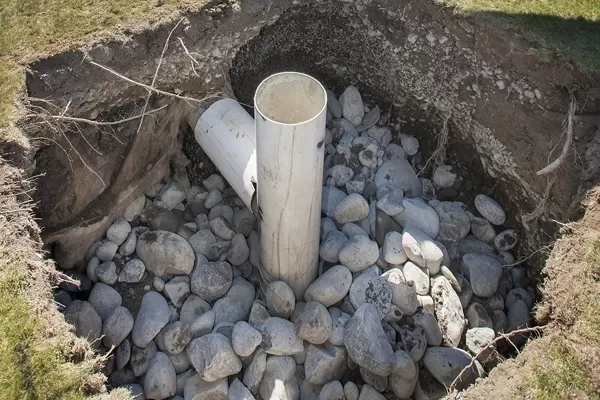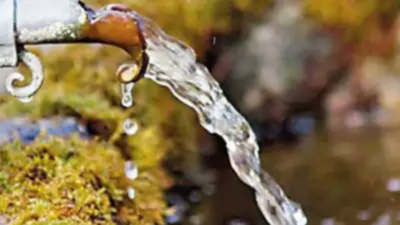Percolation Pits: A Sustainable Solution for Groundwater Recharge...!!!
Percolation pits, also referred to as recharge pits or soak pits, are a sustainable and efficient means for groundwater recharge and stormwater management. These pits are engineered to collect and store rainwater, enabling it to infiltrate the ground and replenish the groundwater table. They are instrumental in alleviating water scarcity and managing surface runoff, especially in regions susceptible to water shortages and urban flooding.

Importance of Percolation Pits
1.Groundwater Recharge: Percolation pits facilitate the replenishment of groundwater levels by allowing rainwater to percolate through the soil. This process is vital in areas where groundwater depletion is a major concern.
2.Flood Prevention: By capturing and storing surplus rainwater, percolation pits mitigate the risk of urban flooding. They help manage stormwater runoff and avert waterlogging in low-lying regions.
3.Soil Moisture Enhancement: Percolation pits improve soil moisture levels, benefiting agricultural practices and promoting vegetation growth.
4.Eco-Friendly Solution: Percolation pits represent an environmentally friendly and sustainable method for water management, as they leverage natural processes to recharge groundwater.
Design and Construction
The design and construction of percolation pits hinge on various factors such as site conditions, soil type, and the volume of rainwater to be captured. Here are the primary steps involved in constructing a percolation pit:
1.Site Selection: Identify an appropriate location for the percolation pit, ideally in an area with high permeability and distant from sources of contamination. The site should be free from obstacles and possess a gentle slope to facilitate water flow into the pit.
2.Excavation: Excavate a pit with suitable dimensions based on the anticipated volume of rainwater. The depth and width of the pit may vary depending on the soil type and the volume of water to be recharged. Generally, the pit ranges from 1.5 to 3 meters deep and 1 to 2 meters wide.
3.Lining and Filling: Line the base and sides of the pit with a layer of coarse sand or gravel to aid water infiltration. The pit is then filled with layers of gravel, coarse sand, and fine sand in a specified sequence. The top layer can be covered with soil and grass to prevent erosion and enhance aesthetics.
4.Inlet and Outlet Structures: Build inlet and outlet structures to direct rainwater into the percolation pit. These structures may include pipes, channels, or trenches to channel water flow from rooftops, paved surfaces, or natural drainage paths into the pit.

Maintenance and Monitoring
To ensure the effectiveness of percolation pits, regular maintenance and monitoring are crucial. Key maintenance activities include:
1.Clearing Debris: Remove debris, leaves, or sediment that may accumulate in the pit or inlet structures. This prevents clogging and ensures unobstructed water flow.
2.Checking Infiltration Rate: Periodically assess the infiltration rate of the pit to verify its proper functioning. A decreased infiltration rate may indicate the need for cleaning or refurbishment.
3.Inspecting Structures: Examine the inlet and outlet structures for damage or blockages. Repair or replace damaged components to maintain efficient water flow.
4.Vegetation Management: Maintain and trim vegetation around the percolation pit to prevent overgrowth and ensure proper functionality.
Benefits of Percolation Pits
Percolation pits offer numerous advantages, including:
1.Water Conservation: By capturing and storing rainwater, percolation pits aid in water conservation and decrease dependence on external water sources.
2.Reduced Runoff: Percolation pits minimize surface runoff, reducing soil erosion and water pollution, especially in urban areas with impermeable surfaces.
3.Improved Groundwater Quality: As rainwater infiltrates through soil layers, it undergoes natural filtration, enhancing the quality of recharged groundwater.
4.Enhanced Biodiversity: Percolation pits support vegetation growth and local biodiversity by maintaining soil moisture levels.
5.Cost-Effective: Percolation pits are a cost-effective water management solution, with lower construction and maintenance costs compared to other systems.

Percolation pits are a practical and sustainable solution for groundwater recharge and stormwater management. They play a critical role in addressing water scarcity, preventing urban flooding, and promoting environmental sustainability. By adopting percolation pits, communities can effectively utilize rainwater, conserve water resources, and contribute to a healthier and more resilient ecosystem.
What's Your Reaction?

















